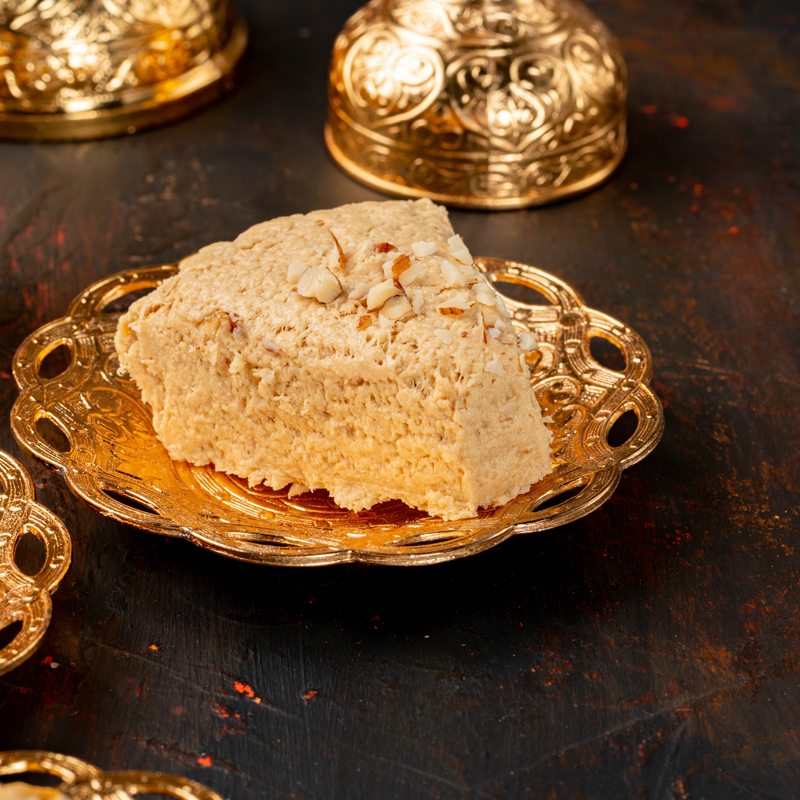
100 gr |
-- |
|
|---|---|---|
| Carbohydrate (gr) | 15.04 |
4928.47 |
| Protein (gr) | 3.59 |
1176.23 |
| Fat (gr) | 12.46 |
4083.43 |
| Fiber (gr) | 1.36 |
445.97 |
| Cholesterol (mg) | 14.64 |
4795.8 |
| Sodium (mg) | 325.27 |
106557.75 |
| Potassium (mg) | 392.16 |
128471.4 |
| Calcium (mg) | 78.15 |
25603.27 |
| Vitamin A (mg) | 46.04 |
15084.01 |
| Vitamin C (mg) | 6.16 |
2019.31 |
| Iron | 0.62 |
203.1 |
Tahini halva is a traditional dessert widely enjoyed in Middle Eastern and Mediterranean cuisines. Its primary ingredients are tahini, a paste made from ground sesame seeds, and sugar. The result is a rich, dense, and slightly crumbly treat with a nutty, sweet flavor that appeals to many.
Tahini halva has 562 calories in 100 grams.
Tahini halva is packed with nutrients due to its sesame seed base, offering a variety of health benefits. Sesame seeds are an excellent source of:
However, the addition of sugar significantly increases its caloric content, making tahini halva an energy-dense food.
Despite its nutrient-rich profile, tahini halva is high in fats and carbohydrates, primarily from added sugar. This combination makes it a dessert to enjoy sparingly, especially for those watching their weight or managing conditions like diabetes.
For individuals aiming to control their calorie intake, limiting consumption to one thin slice is advisable. Pairing it with a balanced meal or using it as a post-workout snack can help mitigate its impact on daily calorie limits.
Tahini halva is a delicious and culturally significant treat. While it offers several health benefits, its high calorie and sugar content require mindful consumption. By enjoying it in moderation, you can appreciate its flavors without compromising your health goals.